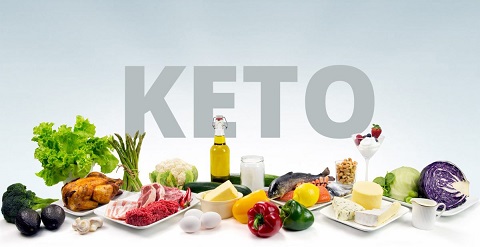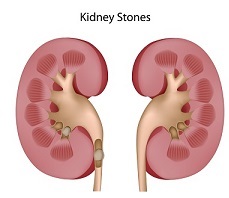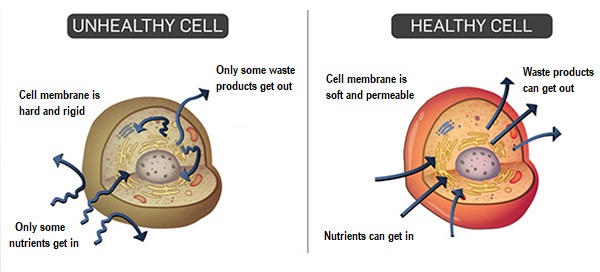Contrary to popular belief, the Keto diet is not protein focused. Rather, this diet focuses on a high fat and low carb diet to shock the body into ketosis. Ketosis is a metabolic process where the body is able to focus on burning fat with carbs mostly out of the picture. The body doesn’t have to work hard trying to burn the carbohydrates for energy, therefore, blood sugar is lowered and fat burning becomes the main focus.
Author: goutdaily
Gout and Kidney Disease
Chronic kidney disease (CKD)
Chronic kidney disease (CKD) limits the amount of waste filtration your body is capable of processing. Uric acid is not seen as a foreign matter to the body, therefore is usually last to be dealt with from a toxin filtering standpoint. This can allow for uric acid build-up, and, in turn, the increased likelihood of developing Gout. The medications used to treat kidney disease have also been associated with drug-induced cases of Gout. Diuretics and beta blockers are typically used for kidney disease induced high blood pressure and are well known to contribute to Gout development.
There is enough scientific research to confirm that kidney disease can cause Gout. How about the opposite? Can Gout lead to kidney disease? The chicken or the egg? Uric acid is filtered through the kidneys, an undeniable relation to both diseases. While this connection may be less established, the evidence is certainly present. Each condition is well-equipped to feed the other.
Continue reading “Gout and Kidney Disease”Can you repair Gout and Arthritis on your own?
All natural healing is guaranteed with patience and understanding. Having a better understanding of your condition can pave the path to lifelong success in controlling it for good. Knowledge of your disorder, and all the contributing factors in your life having led up to your very current ailment(s), can make for a better understanding of the necessary approach and commitment to resolving it.
Inflammatory diseases are not an overnight occurrence. Some of you may be approaching natural healing as your first form of treatment, while many of you have suffered for years upon years, and the prescription drugs are no longer helping you. Natural healing may not be a “quick-fix”, but it also avoids the common “band-aid” for your symptoms like many modern-day prescription drugs. Instead of treating your symptoms, natural healing aims to repair the problem that is causing your symptoms in the first place.
Do you feel like you’ve already tried everything to heal on your own, without long-term success?
Things we hear often:
Continue reading “Can you repair Gout and Arthritis on your own?” Gout, Arthritis, Inflammation: The relation to the diet
This may be one of the most complex areas to understand, and we are gaining new knowledge all the time. For far too long we have remained focused on certain food triggers rather than the source and the reasoning behind our reaction. Food selection is very important. The larger, and often overlooked, picture would be the lack of pH balance to each meal, general unhealthy food choices for far too long, high-heat cooking methods, and an overabundance of processed and now genetically modified selections in the typical diet.
Questions to consider:
- Is red meat the enemy OR is it the grain fed caged source vs. grass fed and free to roam source?
- Is the inflammatory inducing acid of the protein the problem OR are we not providing enough alkaline food sources in the same meal to buffer the acids and still benefit from the good it has to offer?
- What is the true source behind the body’s inflammatory reaction?
You will continue to find conflicting information on what is considered to be a ‘healthy diet,’ rendering you helpless in making concrete decisions on your approach for change.
Here is what we do know:
Continue reading “Gout, Arthritis, Inflammation: The relation to the diet”Important tips regarding Gout and other Inflammatory Conditions
Eating too much causes inflammation-
We know that overeating promotes the inflammatory response and suppresses the immune system. Tests performed by the National Institute on Aging revealed that when animals were fed 50 percent fewer calories per day, their immune response improved, the number of inflammatory cytokines in circulation was reduced, thymus size was maintained and inflammation-fighting T-cell function improved. This study looked at higher and lower calorie consumption; it did not distinguish among the types of calories consumed. Heavy, red-meat-based diets or lots of sugar-laden foods would definitely have a negative impact on immune function and promote inflammation, whereas calories in the form of fruits, vegetables, legumes, nuts and seeds would improve immunity. No matter what the food choices, moderation is the key in terms of both total daily quantity and amounts consumed at one time. Generally, five or six small meals (of the right foods) throughout the day are considered to be healthier than consuming fewer large ones. [4]
Continue reading “Important tips regarding Gout and other Inflammatory Conditions”Traditional Gout Medications
Most commonly prescribed Gout medication options include:
Xanthine Inhibitors: These actually block the enzyme, (xanthine oxidase) necessary for the conversion of purines to uric acid. As of result, blood serum levels are lowered and used to prevent chronic gout, stones, and hyperuricemia. It is not actually a treatment for an acute attack, and can even exacerbate an attack if used while it’s running its course. This treatment sounds good in theory, however, un-naturally stopping a very natural and necessary production such as uric acid must take its toll on the body somehow? After all, uric acid is a potent antioxidant vital to the human body. Attempting to halt its production could be detrimental to its important role as the protector of our DNA. As a result, it is necessary to monitor the liver, kidneys, and blood during its use.
Possible side effects include:
Continue reading “Traditional Gout Medications”INFLAMMATION: WHEN A GOOD THING GOES BAD
Inflammation is a natural, thriving mechanism of the immune system. Acute inflammatory response is a way to fire at and ward off disease and infection, as well as to fuel cellular regeneration. We all require a healthy measure of inflammation in order to survive. What happens when the body feels as though it is constantly under an attack of some sort? What if the inflammatory response persists and you are plagued with an incessant slow burning fire inside of you? This is precisely when a good thing, goes bad.
The body is amazingly resilient, but relies solely upon communication between the major systems within the body (the endocrine, digestive, respiratory/cardiovascular, and the central nervous system) in order to function and heal properly. When chronic inflammation is present, these systems can no longer communicate, and disease is
The Almighty Liver
Why is the liver so important?
The liver may just be one of the most fascinating and forgiving of all organs. It literally has over 500 functions in the body. It is an organ that just keeps giving, despite all of its abuse. As your number one protector, could you be doing more to help the liver do its job?
The liver faces a daily onslaught of abuse from pathogens and toxins in our environment, water, air, hygiene and household products, and our diet. From the time we were nothing more than a fetus in our mother’s womb, our liver was already protecting us as our first, and main level, of defense. The liver cleans your blood, your lymphatic system, and supports your adrenal glands. Healing and cleansing the liver can help heal and cleanse all of the above.
What are some signs of liver congestion?
Continue reading “The Almighty Liver”Arthritis and Joint Pain
Many forms of arthritis are caused by chronic low lying inflammation. Inflammatory cells called cytokines lead to the production of enzymes that attack the tissues and break down cartilage in joints. The word ‘arthritis’ literally means inflammation (itis) of the joints (arthri).
When the body feels as though it is ‘under attack’, it responds by sending white blood cells to that area in an attempt to repair. In cases of chronic inflammation, when these cells fall victim of misfiring, this ‘repair’ actually becomes the damage. The increase in blood flow to these areas causes tender, red, and swollen joints. In turn, the nerves are stimulated, and pain is the result. The heightened number of cells and inflammatory substances within the joint can cause irritation, wearing of the cartilage, and swelling of the joint lining (synovium).
There’s no immediate cure for arthritis, but many sufferers tend to look into treatments to reduce inflammation and ease the pain to make things more manageable. Searching podiatry kansas city might be of use to someone who lives in that area who is currently struggling with this condition. Something that is commonly used to treat both of these ailments is cannabis; this plant naturally relieves inflammation as well as reduces symptoms of pain. Of course, before using cannabis, you’ll have to check the legality of it in your area and look into the different products available to smoke weed with, including these affordable bongs.
Common Types of Arthritis
Continue reading “Arthritis and Joint Pain”Gout and Kidney Stones
Kidney Stones
Kidney Stones (renal calculi) are formed as a result of a buildup of dissolved minerals on the inner lining of the kidneys. Once they make their way into the urinary tract severe pain in the groin, stomach, or flank area can ensue. A decrease in urination coupled with a large amount of stone-forming substances can cause these types of stones to appear. These stones can be formed by the mixture of calcium with oxalate or phosphate; and/or the combination of uric acid and amino acid cysteine.
Much like Gout, Kidney stones are being diagnosed more and more in recent years. The same type of stones can develop in the bladder as well, but are much more uncommon and have remained relatively low and unchanged by comparison. Over the span of almost 30 years, the Mayo Clinic observed a significant rise in the incidences of kidney stones; particularly in adult women. With more accurate CT scans our ability to monitor and diagnose stones are partly behind a good portion of this rise in cases, but also goes hand in hand with the rise in Obesity and Diabetes Type 2. Diets high in sugar, unhealthy fats, and salt have been to blame for stones and this type of diet certainly fits the profile for all of these conditions.
Continue reading “Gout and Kidney Stones”




